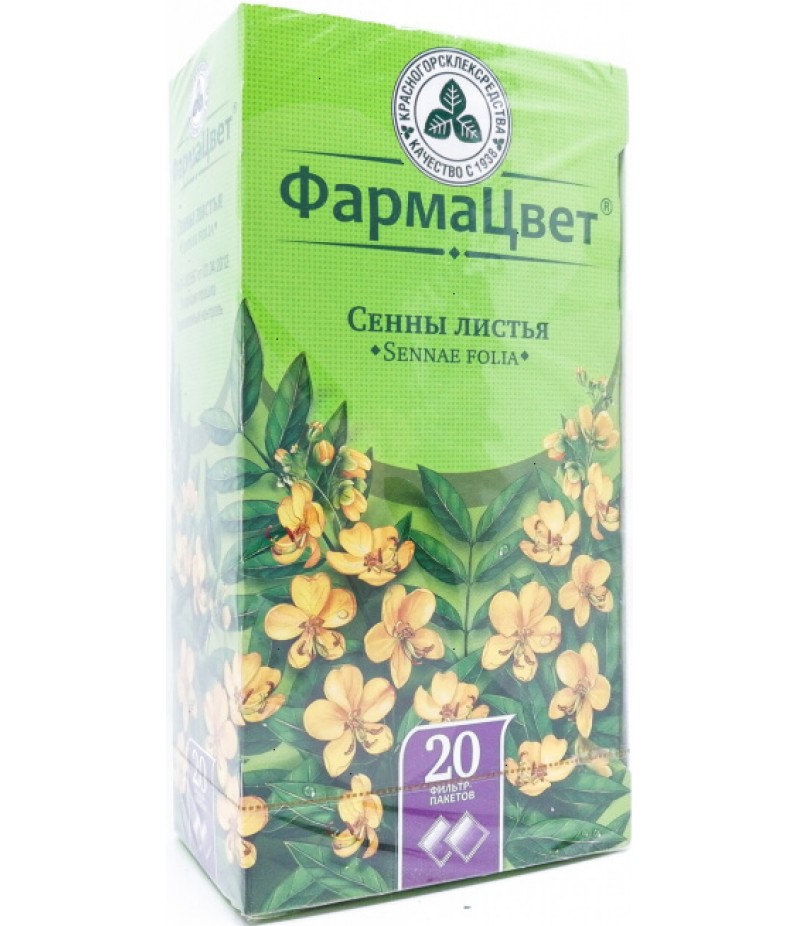Senna leaves 1.5gr #20
- $6.80
- 3 or more $6.65
- Availability:In Stock
Senna leaves instructionYou can buy Senna leaves on this pageCompositionIn 1 tablet of dry extract of Senna 300 mg. Lactose, potato starch, calcium stearate, magnesium carbonate, croscarmellose sodium as auxiliary substances. In 1..
Senna leaves instruction
You can buy Senna leaves on this page
Composition
In 1 tablet of dry extract of Senna 300 mg. Lactose, potato starch, calcium stearate, magnesium carbonate, croscarmellose sodium as auxiliary substances. In 1 briquette contains leaves of Senna of 8 g. In 1 filter bag there is 1.5 g of plant powder.
Form of issue
Pills.
Raw materials in briquettes.
Raw vegetable in filter bags.
Raw materials are ground in packs.
pharmachologic effect
Laxative.
Pharmacodynamics and pharmacokinetics
Pharmacodynamics
The preparation of plant origin containing anthraglikozidy (sennozoidy), which irritating chemoreceptors of the mucosa of the large intestine reflexively strengthens its peristalsis, which causes a laxative effect. Restores the functioning of the intestines with constipation, does not cause addiction.
Senna leaves have a low content of resinous substances, so it does not have a pronounced irritant effect on the mucous membrane, unlike rhubarb or buckthorn. The action develops after 8-10 hours. The drug is well tolerated.
Pharmacokinetics
Sennosides are not absorbed into the digestive tract. In the large intestine, they split and form sennidins, which under the action of bacterial reductases are converted into active metabolites (re-entantrons).
The majority of them (90%) is excreted by the intestines. The rest is absorbed and metabolized in the liver, after which it is excreted by the intestines and kidneys, so urine is colored yellow-brown or red.
Indications for use
regulation of stools with rectum cracks, proctitis, hemorrhoids;
atonic chronic constipation;
preparation for surgical intervention.
Contraindications for Senna leaves
strangulated hernia;
abdominal pain of unclear etiology;
spastic constipation;
disturbance of water exchange;
intestinal obstruction;
uterine bleeding and bleeding from the gastrointestinal tract;
cystitis;
hypersensitivity;
pregnancy.
Side effects
stomach ache;
diarrhea;
allergic reactions;
flatulence;
colitis (with prolonged use).
Senna leaves, instructions for use (Method and dosage)
Leaves of Senna from constipation can be taken in the form of broths, infusions or tablets. The severity of the laxative effect depends on the dose: 2-4 g acts loosely, more than 5 g is laxative.
Take 5-10 g (2 tbsp.) Of vegetable raw materials and pour 1 glass of hot water, heat in a water bath for 30 minutes and insist until completely cooled. The filtered broth is brought to 200 ml with water. Drink 0.5 glasses a night after eating. The amount of drunk broth can be reduced if the laxative effect is very pronounced, accompanied by pain and painful urges. The course of treatment up to 3 weeks.
If grass is used in filter bags, you need to take 4 sachets and pour a glass of boiling water, insist 15 -20 minutes, squeeze. The volume of the infusion is brought to 200 ml. Drink 0.5 glasses a night.
Senna extract in tablets is prescribed to adults for 1-2 tablets per night, the course from 4 days to 1 month. Tablets Senadix or Senadexin are taken with 1 tablet at night. If the effect is not sufficient in a few days, you can take 2-3 tablets (for adults).
Children from 1 to 3 years before bedtime are given half a tablet of Senadex, children from 4 to 12 years - 1 tablet. If the chair does not appear in the morning, the dose increases. It is necessary to choose the minimum dose that normalizes the stool. In any case, children should not exceed the dose of 2 tablets. Picking up a dose, it is supported no more than 7 days. Then slowly reduce - a quarter of the tablet every 3 days.
Overdose
It manifests diarrhea, a violation of water-salt metabolism.
Symptomatic treatment is performed.
Interaction
Preparations from Senna leaves reduce the absorption of tetracycline.
Terms of sale
You can buy Senna leaf without a prescription.
Storage conditions
At temperatures up to 25 ° C.
Shelf life - 3 years.
Reviews about senna leaves
Frequently there are reviews of people who used as a laxative senna leaves. Patients note that with a properly selected dose, you can achieve a regular mushy stool with no pains in the abdomen and painful desires. The convenience of using a tablet form or tea in bags is noted. In most cases, the stool was restored 3-4 after taking the drug. The use of plant laxatives in children is associated with inconveniences, which are associated with the fact that it is difficult to take into account the concentration of active anthroglikozids, so an overdose and side effects may occur. Children often use tablets (Senadexin, Tisasen).
As for the cases when senna leaves were used for weight loss, the responses vary. Taking decoctions and tea leaves of Senna for the purpose of losing weight, women achieve loosening of the chair, the evacuation of food from the intestine is accelerated, and it is poorly digested. The plant itself does not affect the metabolism and weight loss results are questionable, as reported by Internet users. As a rule, for this purpose, preparations of Senna take long and uncontrolled. Long-term use entails the loss of electrolytes (potassium), the appearance of red blood cells and protein in the urine, colitis with atrophy of the mucosa and muscle shell, the deposition of melanin in the intestinal mucosa. It should be borne in mind that with prolonged use, the appearance of hepatotoxicity and the development of intestinal atony with the formation of chronic habitual constipation.

